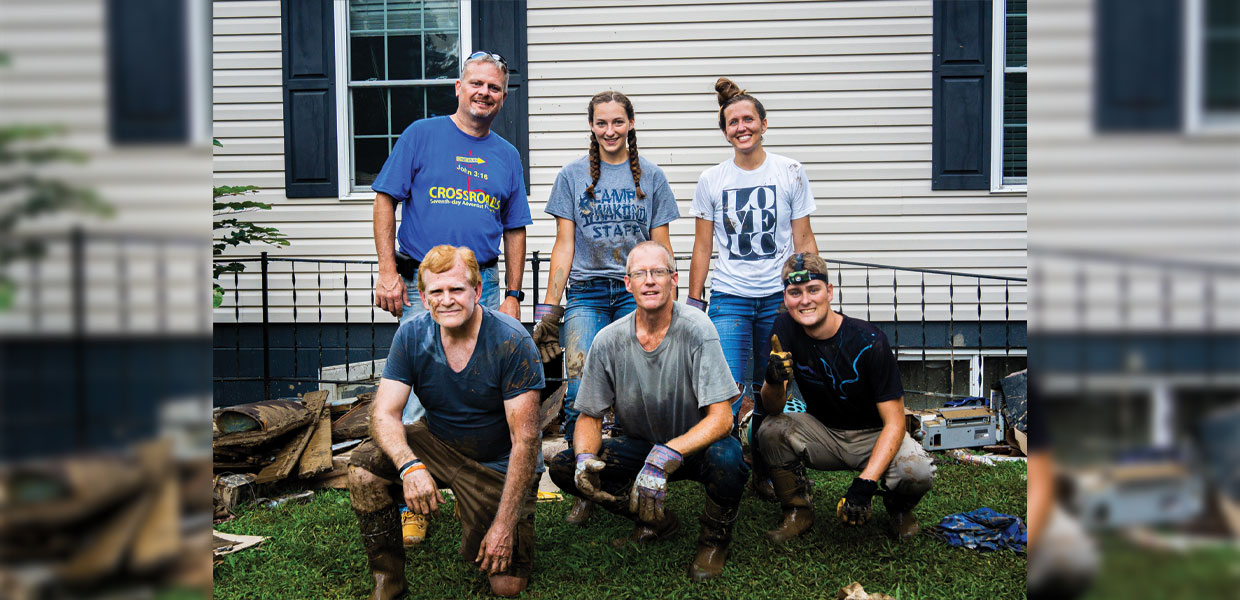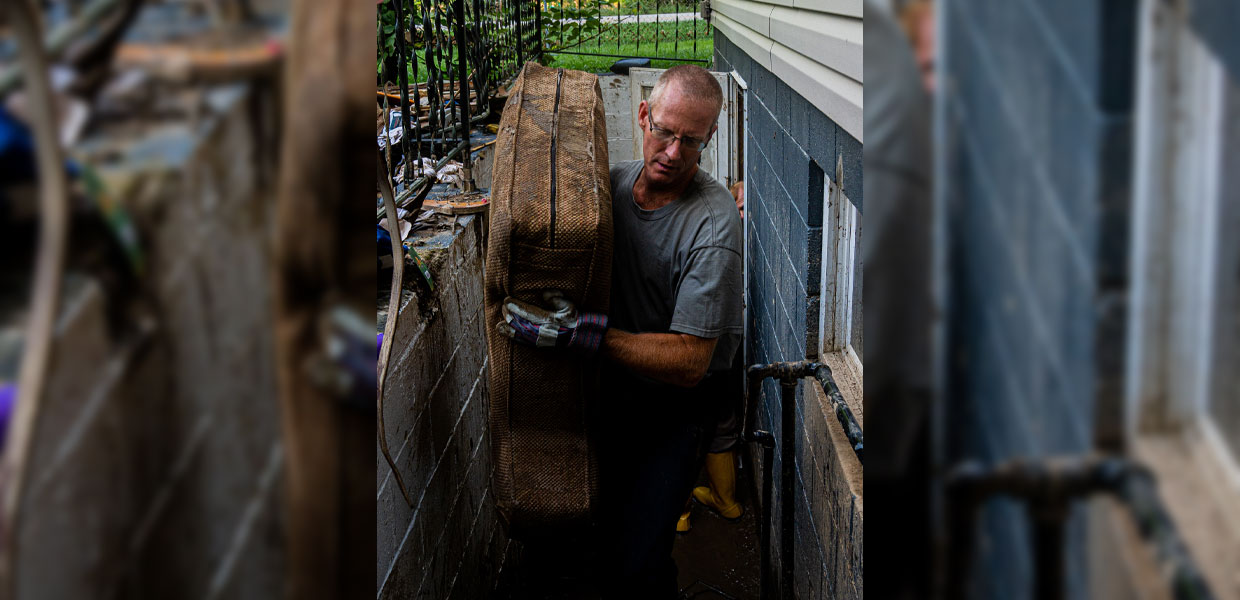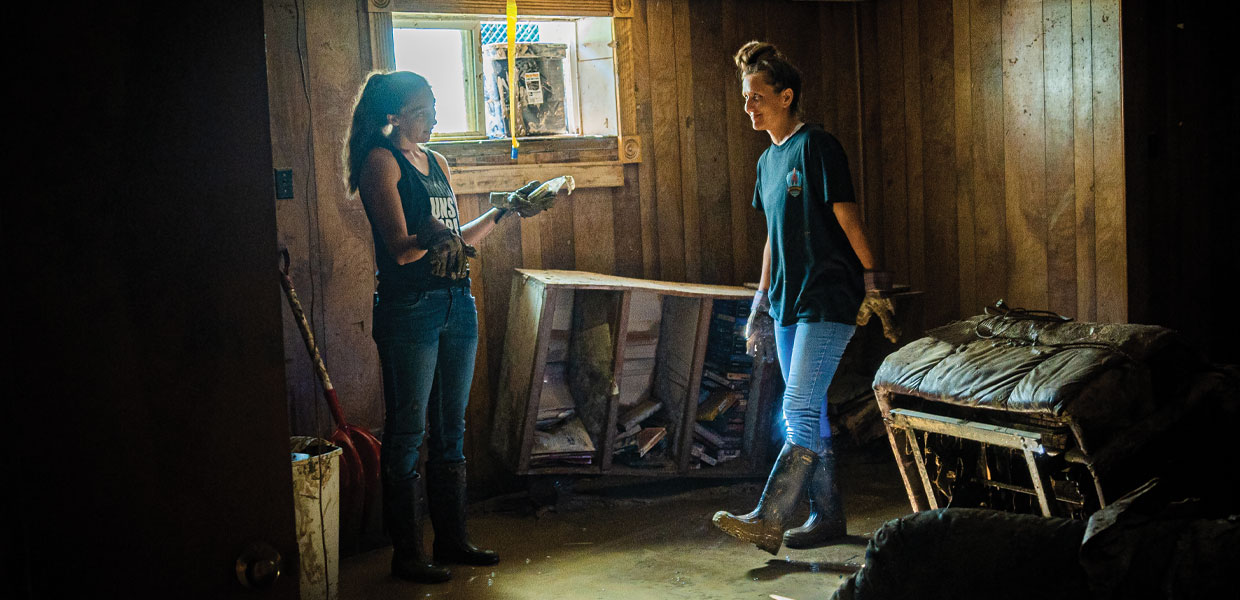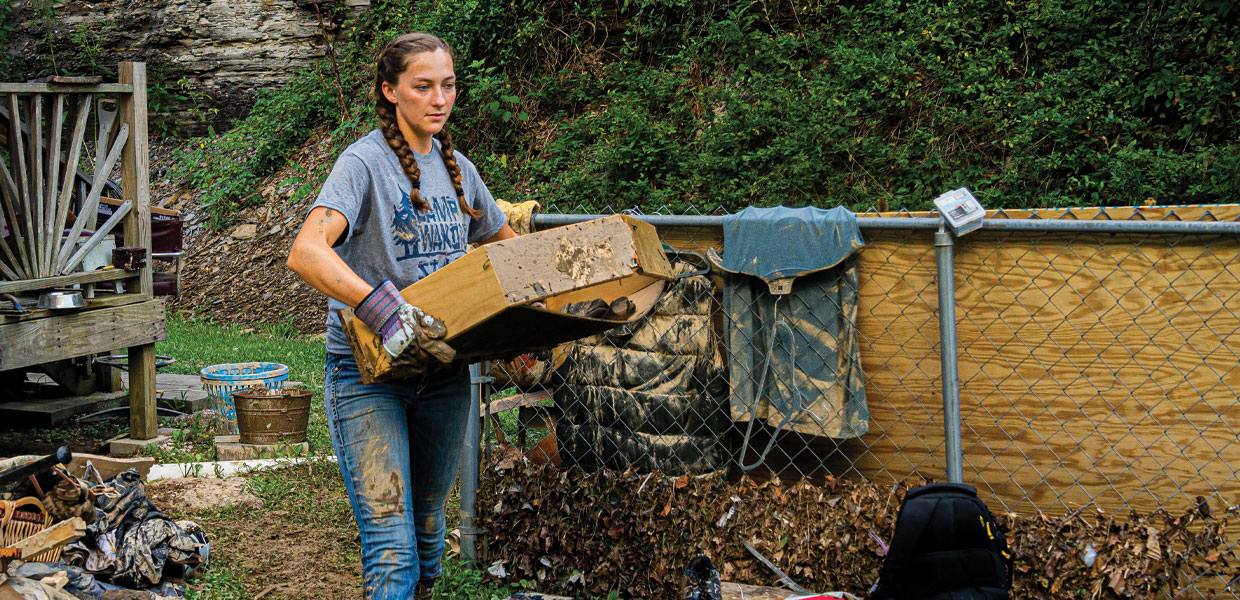
Paola Mora Zepeda

Paola Mora Zepeda

Paola Mora Zepeda

Paola Mora Zepeda
John Smith* was scrolling through his Facebook feed on Friday morning, July 29, 2022, when he noticed a series of posts made by some of his old high school classmates. The posts detailed the damage that ensued from the flash flooding that occurred in eastern Kentucky late Wednesday evening and into Thursday morning, July 27 and 28. Smith, who currently does cross-cultural work with Adventist Frontier Missions, was heartbroken at the images of his old hometown: flooded homes, damaged roads, totaled cars, and displaced families filled his Facebook newsfeed.
The following week, Smith was scheduled to fly abroad for work, but decided to travel to Hazard, Kentucky, instead. He felt called to help the eastern Kentucky community as they began the recovery process.
“[Hazard] is a small-town community,” Smith said. “They are used to getting two to three floods a year, and people know how to deal with that. But this flood was very different. It hit them off guard, and the amount of destruction caused was just unimaginable. No one has ever seen anything like this.”
The National Weather Service reported that the flooding was “historically unheard of,” with an estimated 14 inches of rainfall. At least 38 people were killed, and others are still missing.
The Church Steps Up
In the weeks following the flash floods, waves of Adventist volunteers from across the country arrived in eastern Kentucky to lend a helping hand. With the financial support of the Kentucky-Tennessee Conference, these individuals were able to work on homes, schools, and churches in the area.
“I’ve always been very driven to help people whenever I see a need,” said BreeAn Adams, a member of the Ooltewah, Tennessee, Church. Adams took six days off work to be able to help in Kentucky. “For me, I may not be able to give them money or a new house, but I can at least go and show them that I care.”
The work completed by the volunteers varied — mucking houses; removing drywall, ceilings, and paneling; repairing driveways; handing out medicine; and organizing Points of Distribution. Some Adventist schools, including Madison, Tennessee, Academy, also joined the disaster relief efforts. More than 100 Adventist volunteers helped in the relief effort, and almost half of them were students.
Johnny Rodman, a member at the Oasis, Tennessee, Church and disaster relief field coordinator, said the work in the area has been especially difficult because of the way the houses are spread out. Rodman has been an active volunteer with the Conference, and aided in much of the relief efforts in Mayfield, Kentucky, following last year’s tornado. At Hazard, he has helped find accommodations for the volunteers, created relationships with the local officials, and found leads for families who needed help.
“Once word got out that we were trustworthy, people just started calling in,” Rodman said. “They are so humbled by the little work we do. Some houses had 12 inches of mud in them … when we came in and pulled out their possessions and cleaned out the mud, it gave them a new hope.”
Ed Lynn, a member of the Highland, Tennessee, Church, said he was touched by the response of the affected communities. According to him, the victims themselves are stepping up to help their neighbors. Through a series of connections, volunteers linked with a community member who lent his horses to distribute medicine in areas where the roads were washed out.
“Experiences like this strengthen a person’s awareness to how God is working with people today,” Lynn said. “He works things out so we can meet the right people at the right time, and then help others that we didn’t even know about.”
The Work Ahead
Smith has postponed his work trip until October. He continues to monitor his Facebook feed to find updates on the situation in eastern Kentucky, and information about individuals who may need help. One day, he came across a post from a friend:
“If you haven’t been in [the affected communities] firsthand, you can’t really appreciate what has happened here. Everyone stay the course because it is up to us local people to fix it back. We are not going to get much help when the new wears off.”
It is estimated that it will take years for the affected communities to recover. Smith’s call to the Church is to continue helping eastern Kentucky beyond a short period of time.
“We have an opportunity to show not only that we care enough to be out here for a couple of weeks, but we care enough to keep on supporting this community on the long-term,” Smith said. “When we look at Jesus and His example, He was always going out of his way to help people .… Sometimes the best way to share the Gospel is just showing up and meeting people’s immediate needs.”
Continuing to Help
The Kentucky-Tennessee Conference is currently working to provide Community Emergency Response Team classes. Rodman said he wants to see more people involved in this ministry.
“This disaster has been very different, and I am afraid that in the next couple of years, the number of volunteers is going to die out,” Rodman said. “It is going to be a big struggle. We are going to need more hands and more prayers. But my hope is that, as a Church, we can continue to be a blessing.”
If you’d like to volunteer at Hazard, Kentucky, contact us at 615-420-8148.
*The name of the source has been changed due to safety concerns in his location of work.
Kentucky-Tennessee | October 2022



Comments are closed.